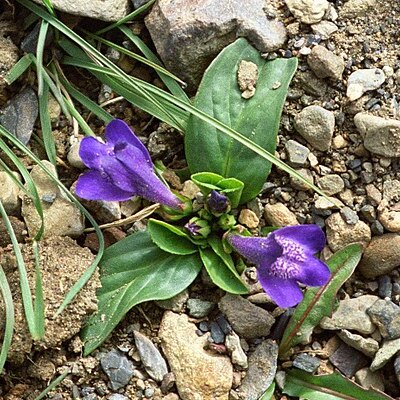A herb. It grows up to about 10 cm tall. It has rhizomes or underground stems 10 cm long. It has 2 soft scales near each node. There are 6-10 leaves in a ring. They are oval or spoon shaped and 2-7 cm long. The flowers are in groups of 3-5. They are dark blue to purple. The fruit is red to dark purple and oval and 1 cm long. There are many seeds. They are 1 mm across.

